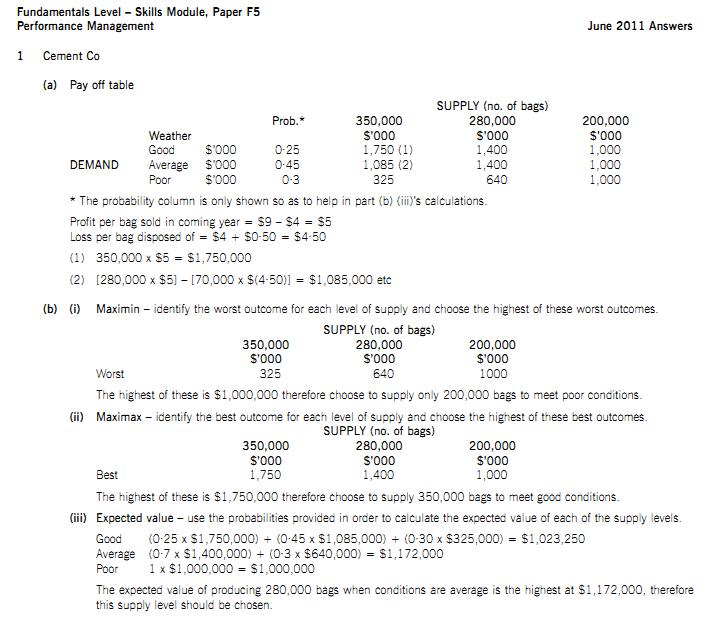为了帮助考生系统的复习2011年ACCA考试课程全面的了解ACCA考试教材的相关重点,小编特编辑汇总了2011年ACCA考试辅导资料,希望对您参加本次考试有所帮助!

(c) Maximin and expected value decision rules The ‘maximin’ decision rule looks at the worst possible outcome at each supply level and then selects the highest one of these. It is used when the outcome cannot be assessed with any level of certainty. The decision maker therefore chooses the outcome which is guaranteed to minimise his losses. In the process, he loses out on the opportunity of making big profits. It is often seen as the pessimistic approach to decision-making (assuming that the worst outcome will occur) and is used by decision makers who are risk averse. It can be used for one-off or repeated decisions.The ‘expected value’ rule calculates the average return that will be made if a decision is repeated again and again. It does this by weighting each of the possible outcomes with their relative probability of occurring. It is the weighted arithmetic mean of the possible outcomes.Since the expected value shows the long run average outcome of a decision which is repeated time and time again, it is a useful decision rule for a risk neutral decision maker. This is because a risk neutral person neither seeks risk or avoids it; they are happy to accept an average outcome. The problem often is, however, that this rule is often used for decisions that only occur once. In this situation, the actual outcome is unlikely to be close to the long run average. For example, with Cement Co, the closest actual outcome to the expected value of $1,172,000 is the outcome of $1,085,000. This is not too far away from the expected value but many of the others are really different.
相关文章:
更多关注:
(责任编辑:中大编辑)